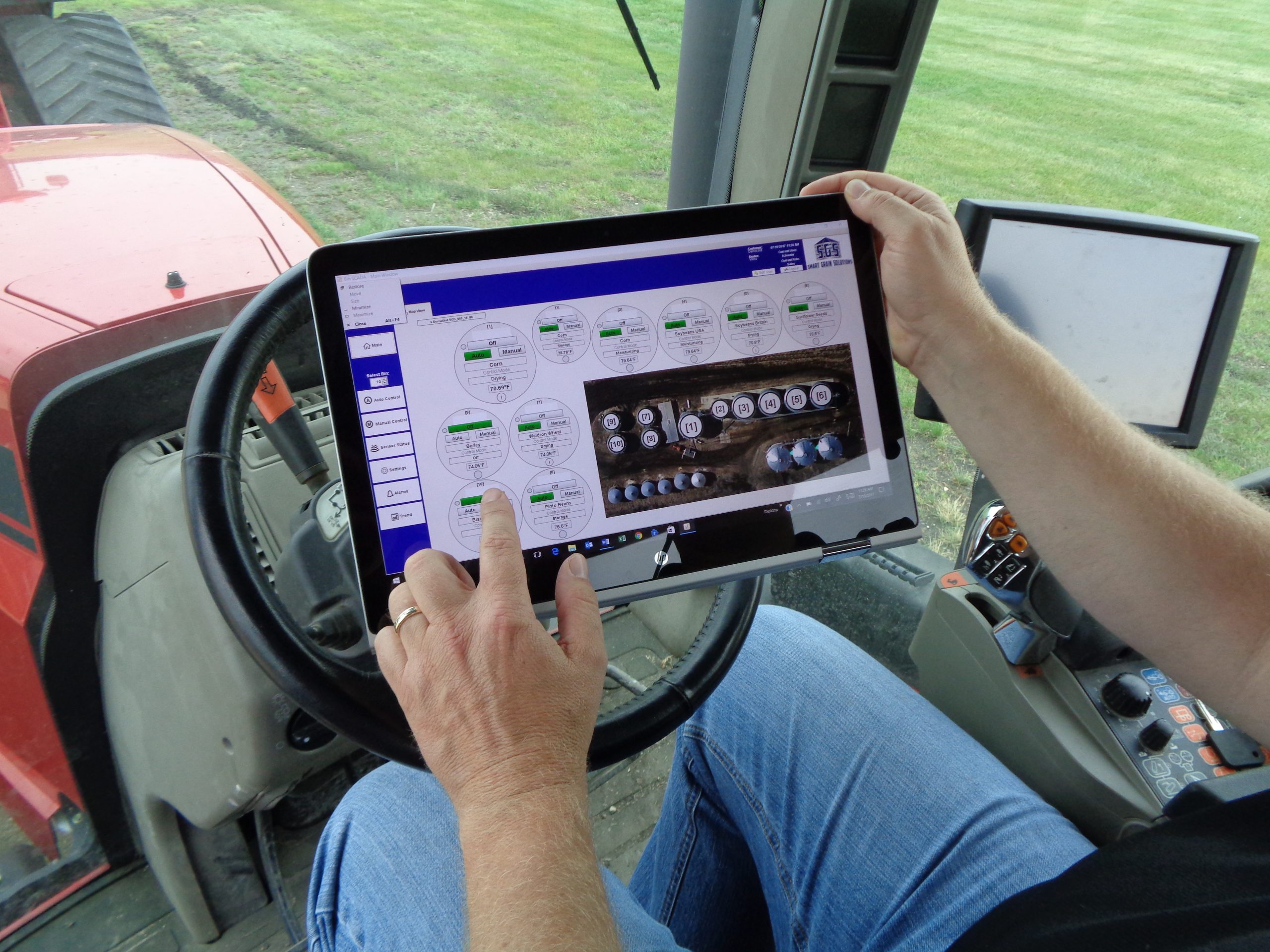Technology and management are key.
Managing grain in storage, especially as bins keep getting larger, can be challenging. Grain monitoring systems can help growers stay on top of moisture management, storage temperatures, grain conditioning, and more, says Kevin Boeder, operations manager with Minnesota- based Smart Grain Solutions (SGS).
From anywhere on or off the farm, growers can monitor bin status on smart phones or computers and remotely shut fans on and off, change storage parameters and a host of other storage functions.
“If something goes wrong in a grain bin, let’s say a fan kicks out because it blew a power breaker or a bin begins to heat, a hot spot is detected, or Junior runs over something with a big tractor, it’s going to notify the owner via text or email that there is a problem at that site,” says Boeder.
The system is a programmable logistics center-based unit, used to control an entire storage site. Built-in data from equilibrium moisture content charts allows the unit to determine when to turn fans on and off when certain conditions arise, detected by temperature and moisture sensors inside and outside of the grain bins. “It takes away all of the guesswork,” says Boeder.
He also maintains grain monitoring systems create more value coming out of the bins. “A lot of people just fill the bin up, turn the fans on, and live with what happens. I don’t think that’s acceptable anymore. It can be much more profitable,” he says.
Boeder provides an example that after installing the monitoring system on one site alone, the grower realized up to $10,000 per bin more value. “If you start taking those numbers over a five or 10-year period, these are impressive numbers,” adds Boeder.
Not only can growers identify and address problems in the bin, the system generates other types of information. “At least growers know what it is they have to do, what they need to fix, and how to approach it. [The system] tracks everything it does for the entire year. You’ll know how much energy a motor uses, what the cost per unit was, and a whole host of useful information that can be used for budgeting and planning for the future,” says Boeder.
The SGS system reads conditions in multiple grain bins on one unit, making the system more economical, says Boeder. “Say you had four bins, two have wet sunflowers in it, one has dry, and one you just wanted to cool. It’ll operate every one of those bins individually.”

